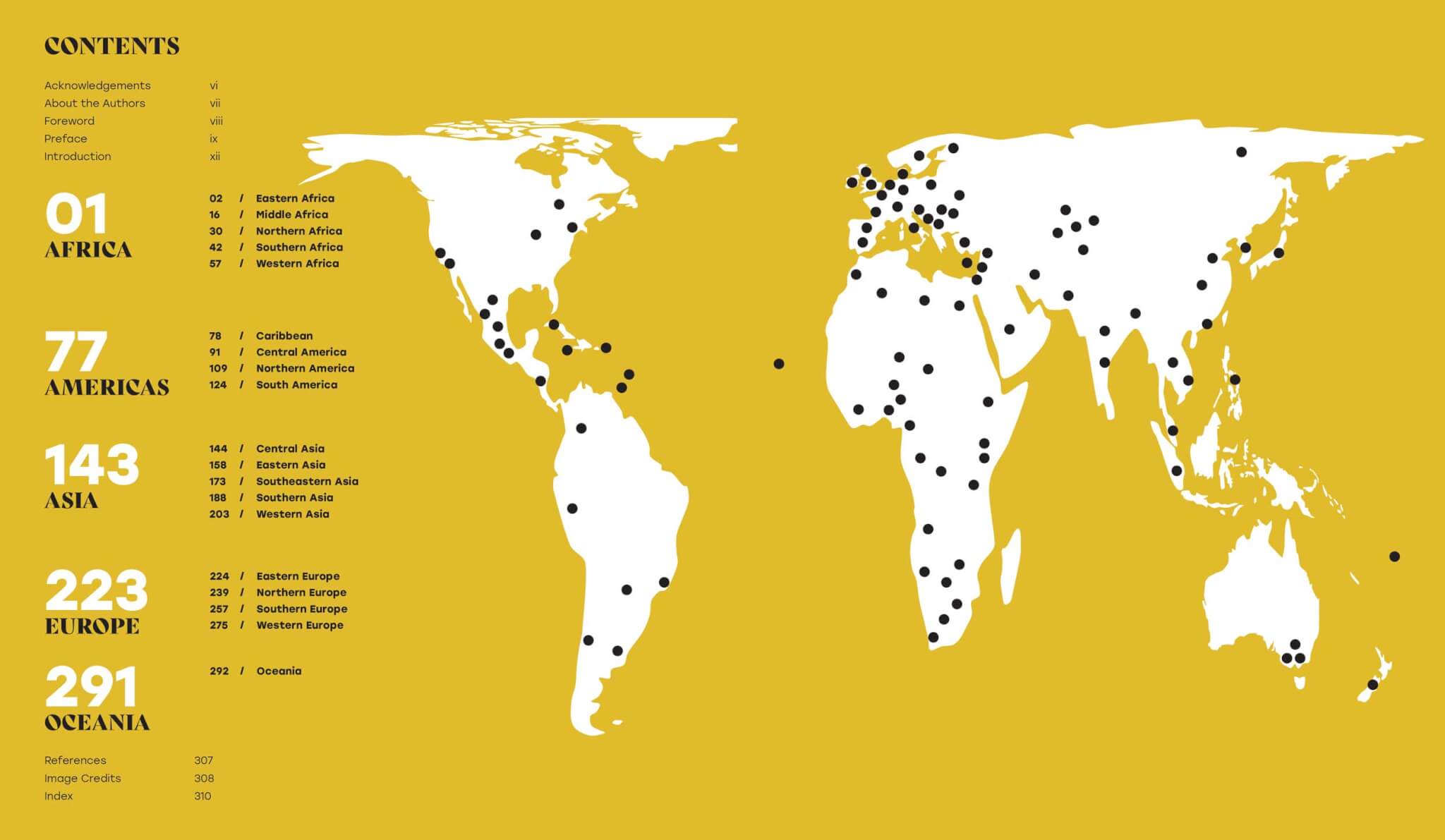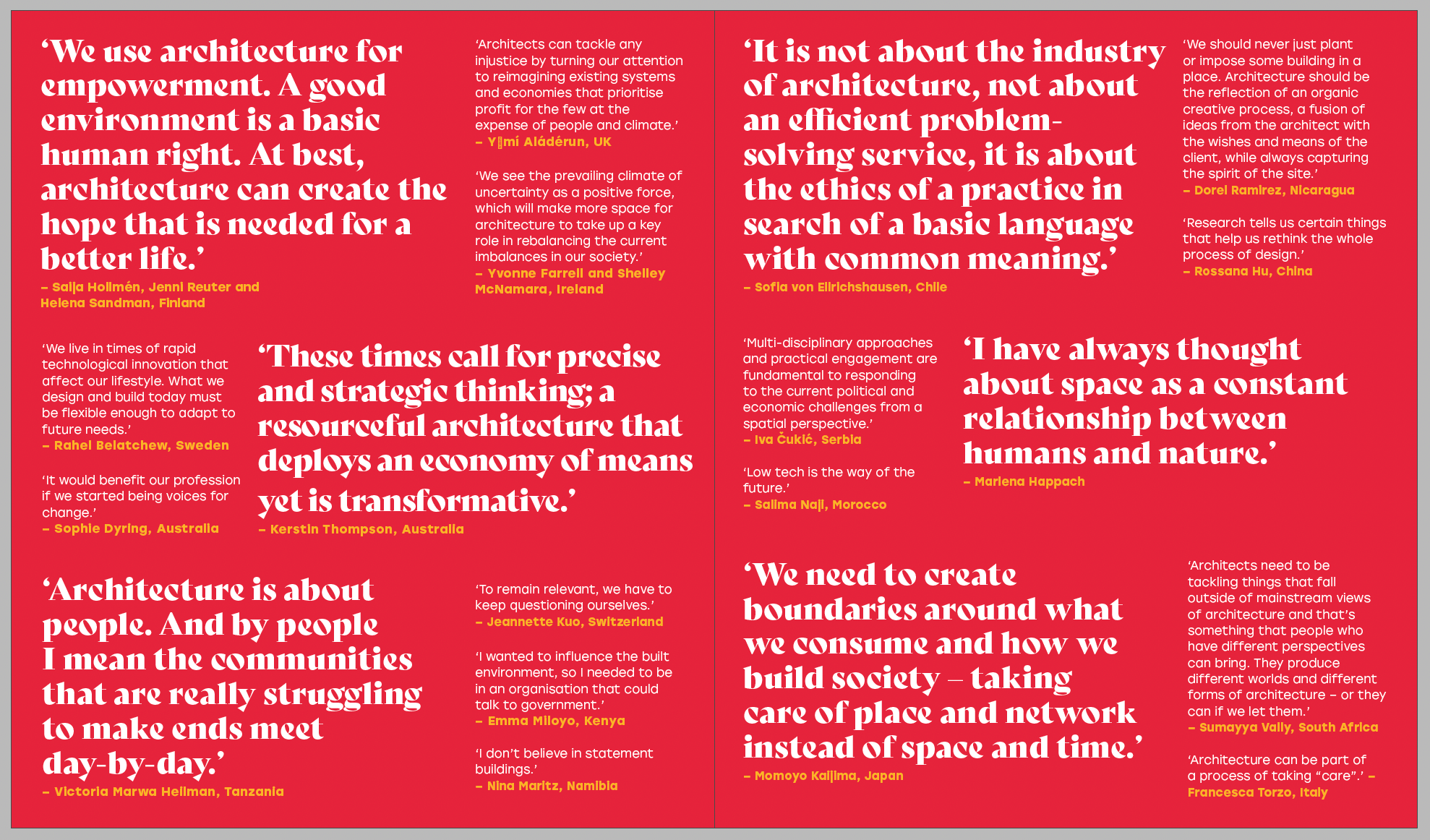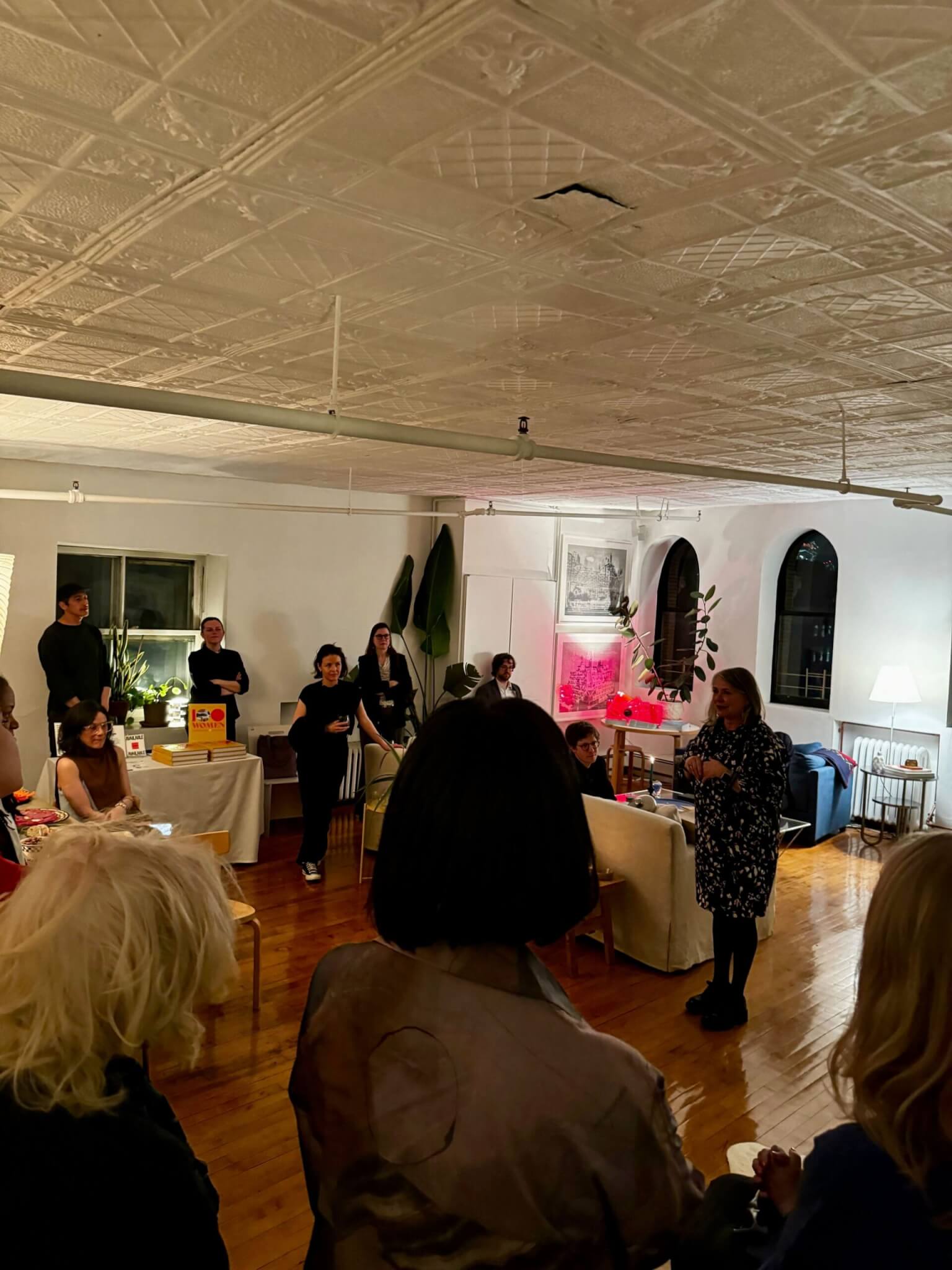100 Women: Architects in Practice | By: Harriet Harriss, Naomi House, Monika Parrinder, and Tom Ravenscroft | RIBA | $64.00
The careers and works of 100 global women practicing architecture around the world are on display in 100 Women: Architects in Practice. The book was written and compiled by renowned educators and designers Harriet Harriss, Naomi House, Monika Parrinder and architectural journalist and Dezeen editor Tom Ravenscroft. Published by the Royal British Institute of Architecture (RIBA), the hardcover tome is self-described as a “coffee-table trojan horse, formatted and presented to prove aestheticism can no longer resist activism.” Its pages highlight a range of projects and designers all worthy of being household names.
The editors of the book begin by calling out the prevalence of male-domination in architecture on a global scale. It reminds us that “Vietnam and Turkey are the only countries where women architects form the majority of the profession,” and that this diminishes the capacity for architects that identify as women to be judged on architectural integrity alone: successful women in the field (when measured by mainstream metrics) are then used as proof that prejudice is no longer a problem. It dismantles the false narrative that “women never apply,” or that they’re “virtually impossible to find.” And ultimately, it showcases a counter-narrative centering women designer’s creativity in approaching issues like the need for more community-led projects, decolonization of spaces, and social and climate injustices.

Ultimately, the editors look forward to the day when books like this are rendered obsolete. But to help get there, curating the more than 300-page book was a four-year-long process that began during the pandemic, when Ravenscroft pitched the idea to RIBA and quickly enlisted Harriss, House, and Parrinder to collaboratively bring it to life. Together, the group identified women from six continents and 79 countries, many of whom are working within a hyperlocal context.
“We wanted as much as possible for people to be rooted in their locales so we tried our best to feature women who are based in countries that they are representing,” explained the authors. Among architects profiled are Pakistan’s first female architect Yasmeen Lari, Nigerian architect and curator of the 2023 Sharjah Architecture Triennial Tosin Oshinowo; and Iranian-born British architect Farshid Moussavi who is hailed as “one of the U.K.’s most prolific and pre-eminent women architects practicing today.”

In many ways, 100 Women is a response to Despina Stratigakos’ 2016 book Where Are the Women Architects? and The New York Times’s similarly titled opinion piece, “Where Are All the Female Architects?” The reporting noted that “women account for half of graduates from architecture programs in [the U.S.], but they make up about 20 percent of licensed architects and 17 percent of partners or principals in architecture firms.”
The architects in 100 Women have each navigated predominantly patriarchal landscapes in both academia and profession, challenging societal conventions while forging their respective paths. In Bangladesh, Suhailey Farzana works with local communities to improve public infrastructure, including a project in Jhenaidah that focused on female public toilets (a rarity in the city). Algerian-born Samia Henni, who studied architecture during the Algerian Civil War in the 1990s and is an award-winning author and educator, focuses on built, destroyed, and imagined environments, primarily through exhibitions to remind us that architecture is not only about form and building, but “can also be about walls, camps, barbed wire, and borders.” And for New Zealand Māori architect Elisapeta Heta, her work is aimed at bolstering Indigenous voices and embedding their thinking within her approach to architecture and design.
“Rather than focusing on historical figures, we took the view that a publication offering a snapshot of the most exciting women architects practicing now could well serve to support these women and their careers in real-time,” stated the book’s preface. “While Despina Stratigakos’ 2016 publication asked Where Are the Women Architects? We intend to say, ‘Here are the Women Architects’.”
Earlier this month, AN hosted a launch party at publisher Diana Darling’s Tribeca loft for 100 Women, where Catherine Clark, president of Royal Institute of British Architects-USA; Julia Gamolina, founder of Madame Architect and an architect featured in the book; and Jamaican architect Patricia Green were in attendance. All offered remarks about the publication and its impact.

“When I was first approached to be included in the book, I wondered, ‘why me?’” admitted Green, who created the Bob Marley Museum in Kingston, Jamaica. “I don’t have a big high-rise building like Zaha Hadid, so part of me was dismissive at first. But I realized that I have achieved things that are important, and I do have a story to tell. This experience has helped enable me to understand myself and my role in the context of the profession.”
Ameena Walker is a a New York City-based independent writer and editor covering architecture, art, food, and design culture.











